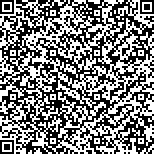下载中心
优秀审稿专家
优秀论文
相关链接
摘要

本文针对遥感影像复杂背景下,背景地物光谱特征与目标光谱特征之间存在较强相关性的问题,提出一种基于仿蝇视觉的复杂背景下遥感异常检测算法.首先构建并行多孔径背景模型,实现对复杂背景特征的自适应描述;然后基于异常目标的光谱特征相对异常性,采用相对马氏距离区分异常区域、不确定区域与无目标区域,消除背景与目标光谱相关性对检测结果干扰的同时,弥补了传统假设检验无法区分无目标和不确定问题的不足;最后融合多个背景模型的检测结果,实现异常目标检测.仿真实验将围绕多种背景地物并存复杂区域的异常检测验证本文算法的有效性.
Anomaly detection algorithms are based on the assumption that the background follows a multivariate normal distribution. An anomaly emerges when a deviation occurs in the distribution of the background model. Another assumption is that the spectral features of the background and the anomaly are uncorrelated. However, clutter background often has spectral features that are too complex to be accurately described by a background model. In fact, the complex spectral features of different ground objects are correlated with the features of anomaly targets to some extent. Hence, background information may be contaminated by other anomalous and noisy signals. Moreover, the false alarm rate of detection results increases because noise or background pixels may be wrongly detected as anomalies. In other words, the anomaly detection method based on hypothesis testing is sensitive to anomalies. Two main factors explain high false alarm rates in detection results. One factor is the limited capability of models to characterize backgrounds. An effective background model must reduce the correlation between backgrounds and anomalies. The other factor is the judgment of uncertain areas, which differ from backgrounds but are not sufficiently anomalous to be marked as anomalies. Inspired by the biological theory of fly vision, we proposed an anomaly detection algorithm for spectral anomaly targets in remote sensing images. A parallel multi-aperture model was constructed to adaptively and separately model the spectral features of multiple kinds of background objects. Depending on the significance of an anomaly, the anomaly, background, and uncertain area were marked by the relative Mahalanobis distance. Hence, the proposed algorithm can reduce the influence of correlation between anomalies and backgrounds and remedy the disadvantages of traditional hypothesis testing methods, which cannot distinguish uncertain areas and the absence of anomalies. The detection results from the multi-aperture model were then fused to obtain the anomaly detection results. The simulated experiment focused on the anomaly detection of clutter areas containing various background objects. Both synthetic data and real data were applied to verify the effectiveness of the proposed method. Experiment results show that the proposed algorithm achieves better performance compared with other classic algorithms. Under clutter background, the proposed method can still detect anomalies, as well as the shape and size of a certain target. The proposed algorithm only marks the most significantly abnormal areas as targets. An uncertain area detected by one aperture is estimated again through fusion. The multi-aperture model reduced the correlation of spectral features between the background and anomaly to some extent. The background-sensitive algorithm can distinguish uncertain areas and backgrounds and precisely detect the shape and size of targets, especially those with distributed densities. A soft judgment is deemed robust to background models; hence, the proposed algorithm is robust to clutter backgrounds.

